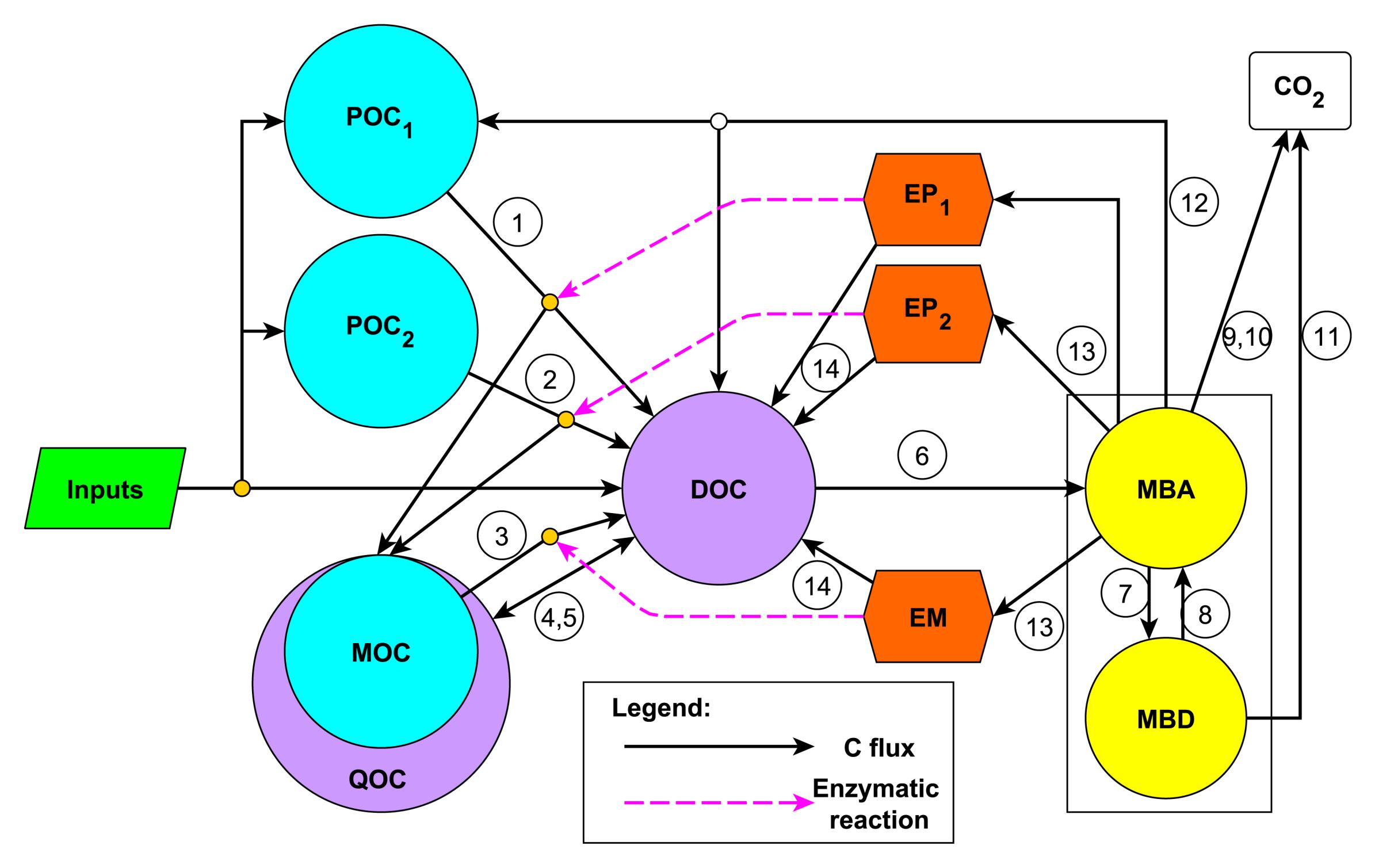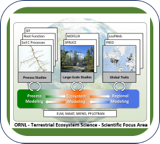Microbial ENzyme Decomposition Model (MEND)
We developed MEND because we observed that most Earth System Models lacked mechanistic details about microbial decomposition, including adsorption and desorption of dissolved organic carbon, active microbial biomass, and enzymes. Further most Earth System Models use conceptual rather than measurable soil pools and first order decomposition rates.
Our model has three soil carbon pools:
- particulate organic carbon as cellulose (POC1),
- particulate organic carbon as lignin (POC2), and
- mineral associated organic carbon (MOC).
With enzymes EP1, EP2, and EM corresponding to the soil pools.
Enzymes decompose the carbon pools via the Michaelis-Menten equation, resulting in the production of dissolved organic carbon (DOC) that can be taken up by microbes (MBA and MBD).


